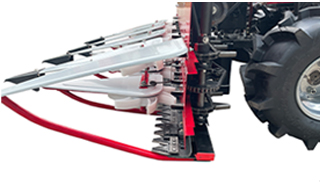Nov . 10, 2024 07:34 Back to list
Effective Methods to Remove Rust from Brake Drums for Improved Performance
How to Clean Rust Off Brake Drums
Rust on brake drums can be a significant concern for vehicle owners, as it can impact braking efficiency and safety. Brake drums are essential components in the braking system of many vehicles, especially those with drum brakes. Over time, exposure to moisture and road salt can lead to rust formation, which can compromise the integrity of the brake components. In this article, we will discuss effective methods for cleaning rust off brake drums, ensuring your vehicle remains safe and reliable.
Understanding the Problem
Before delving into the cleaning process, it's crucial to understand why rust forms. Brake drums are typically made of cast iron or steel, which are prone to oxidation when exposed to moisture and air. This rust not only reduces the effectiveness of the braking system but can also lead to costly repairs if not addressed promptly. Regular maintenance and cleaning can prevent rust build-up and prolong the lifespan of your brake drums.
Tools and Materials Needed
To effectively clean rust off brake drums, you will need the following tools and materials
1. Safety goggles and gloves 2. Wire brush or steel wool 3. Sandpaper (medium to fine grit) 4. Brake cleaner or degreaser 5. Rags or lint-free cloths 6. Lubricating oil or rust inhibitor (optional) 7. Jack and jack stands (if necessary)
Step-by-Step Guide to Cleaning Rust Off Brake Drums
1. Safety First
Before starting any work on your vehicle, ensure it is parked on a flat, stable surface. Engage the parking brake and wear your safety goggles and gloves. If you need to lift the vehicle, use a jack and secure it with jack stands to prevent accidents.
To access the brake drum, you will need to remove the wheel. Loosen the lug nuts slightly while the wheel is still on the ground, then lift the vehicle with the jack and remove the lug nuts completely. Carefully take off the wheel to expose the brake drum.
how to clean rust off brake drums

3. Inspect the Brake Drum
Once the wheel is removed, visually inspect the brake drum for signs of rust. If the rust is minimal, you can proceed with cleaning. However, if the drum is severely corroded or damaged, consider replacing it to ensure your safety.
4. Begin Cleaning
Using a wire brush or steel wool, gently scrub the rusted areas of the brake drum. Be careful not to apply too much pressure, as this could scratch or damage the surface of the drum. For stubborn rust, you may need to use medium-grit sandpaper to remove it effectively. Once the majority of the rust is removed, switch to fine-grit sandpaper to smooth the surface.
5. Apply Brake Cleaner
After removing the rust, spray the drum with brake cleaner or a suitable degreaser. This will remove any remaining debris and oil residues. Wipe the surface with a rag or lint-free cloth, ensuring it is clean and dry before reassembling.
6. Optional - Apply Lubricating Oil
To mitigate future rust formation, you may want to apply a thin layer of lubricating oil or a rust inhibitor to the cleaned surface. This will help protect the brake drum from moisture and corrosion.
7. Reassemble the Brake System
Once the drum is clean and dry, reinstall the wheel. Tighten the lug nuts securely and lower the vehicle back to the ground. Ensure everything is properly tightened and double-check your work before hitting the road.
Final Thoughts
Cleaning rust off brake drums is an essential part of vehicle maintenance, particularly in climates where salt is used on roads during winter. By following these steps, you can enhance the performance and safety of your braking system. Regular inspections and maintenance will not only prevent rust but also extend the lifespan of your vehicle's brake components. If you are unsure about any steps in this process or if your brake drums are severely damaged, consider consulting a professional mechanic for assistance. Staying proactive about your vehicle's maintenance can save you time and money in the long run.
-
Scania Brake Drums: OEM Quality for Optimal Safety & Durability
NewsAug.16,2025
-
R.V.I: Advanced Remote Visual Inspection for Precision
NewsAug.15,2025
-
Discover HYUNDA: Innovative Vehicles, Equipment & Solutions
NewsAug.14,2025
-
R.V.I: Unlock Advanced Insights & Real-time Performance
NewsAug.13,2025
-
Kamaz Brake Drum: Durable & Reliable for Heavy Duty Trucks
NewsAug.12,2025
-
Heavy Duty Iveco Brake Drum - Premium Quality & Safety
NewsAug.11,2025
